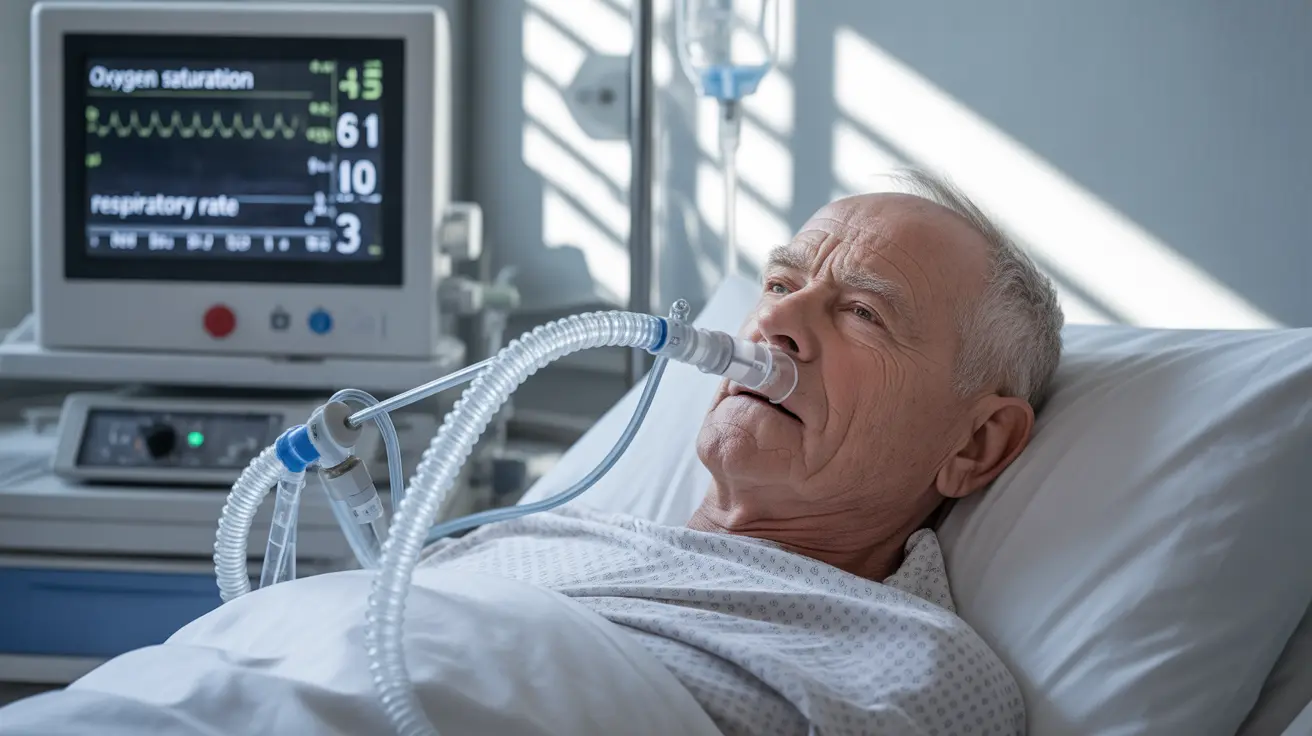When COVID-19 causes severe respiratory complications, healthcare providers may need to use a breathing machine, also known as a ventilator, to help patients get enough oxygen. Understanding how these vital pieces of medical equipment work and when they're needed can help patients and their families make informed decisions about their care.
This comprehensive guide explains everything you need to know about COVID-19 breathing machines, including their purpose, function, and what to expect if ventilation becomes necessary.
What Is a COVID-19 Breathing Machine?
A COVID-19 breathing machine, or ventilator, is a sophisticated medical device that helps patients breathe when their lungs can't function properly on their own. The machine delivers oxygen to the lungs and removes carbon dioxide from the body, essentially performing the work of breathing for the patient.
These machines become necessary when COVID-19 causes severe inflammation and damage to the lungs, making it difficult or impossible for patients to breathe independently. The ventilator connects to the patient through a tube inserted into their windpipe, a process known as intubation.
When Ventilation Becomes Necessary
Healthcare providers consider several factors when determining if a patient needs mechanical ventilation:
- Severely low oxygen levels in the blood
- Extreme difficulty breathing
- Inability to maintain adequate oxygen levels with other interventions
- Rapid progression of respiratory distress
- Signs of respiratory failure
How Breathing Machines Support COVID-19 Patients
Mechanical ventilation provides crucial support for severely ill COVID-19 patients in several ways:
Oxygen Delivery
The breathing machine delivers precisely controlled amounts of oxygen to the patient's lungs, ensuring their body receives adequate oxygen even when lung function is compromised.
Pressure Support
Ventilators can apply positive pressure to keep air sacs in the lungs open, making oxygen exchange more efficient and reducing the work of breathing.
Breathing Rate Control
The machine can be programmed to deliver the optimal number of breaths per minute, ensuring consistent and adequate ventilation.
Potential Risks and Complications
While breathing machines are often life-saving, they can carry certain risks:
- Ventilator-associated pneumonia
- Damage to the vocal cords
- Weakness of respiratory muscles
- Psychological impacts such as anxiety and delirium
- Potential lung injury from prolonged ventilation
Recovery and Weaning Process
The process of removing a patient from ventilator support, known as weaning, requires careful medical evaluation and monitoring. Success depends on various factors, including the patient's overall health, the severity of their COVID-19 infection, and how long they've been on ventilator support.
Frequently Asked Questions
What is a COVID breathing machine (ventilator) and when is it needed for COVID-19 patients?
A COVID breathing machine is a mechanical ventilator that helps patients breathe when their lungs are severely affected by COVID-19. It's typically needed when patients can't maintain adequate oxygen levels on their own or show signs of respiratory failure despite other interventions.
How does mechanical ventilation help patients with severe COVID-19 lung problems?
Mechanical ventilation helps by delivering precise amounts of oxygen to the lungs, maintaining positive pressure to keep air sacs open, and controlling breathing rate. This support allows the lungs to heal while ensuring the body receives sufficient oxygen.
What are the possible risks and complications associated with using ventilators for COVID-19?
Possible complications include ventilator-associated pneumonia, vocal cord damage, muscle weakness, and psychological effects. While these risks are significant, they're often outweighed by the life-saving benefits when ventilation is necessary.
How do doctors decide when a COVID-19 patient can be taken off a ventilator?
Doctors assess multiple factors, including oxygen levels, breathing strength, overall stability, and the patient's ability to breathe independently. The weaning process is gradual and carefully monitored to ensure patient safety.
What are the chances of recovery for COVID-19 patients who require a breathing machine?
Recovery rates vary significantly based on factors such as age, overall health, comorbidities, and length of time on ventilation. While some patients recover successfully, ventilator use in COVID-19 cases often indicates a serious condition that can affect long-term outcomes.




